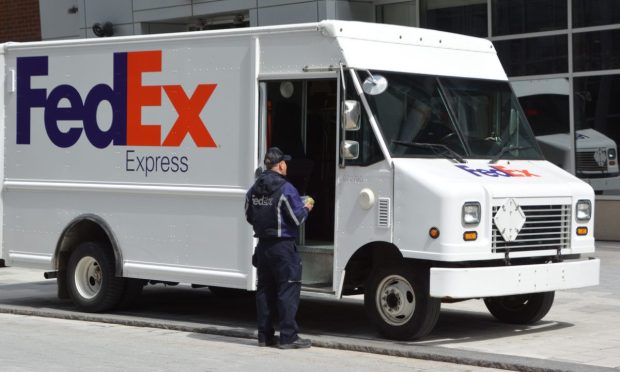FedEx’s Volume Pressures Point to Spending Shifts and Amazon’s Fulfillment Dreams

Wall Street’s focus on FedEx has been trained on cost cutting, and as we profiled here in the immediate wake of earnings, investors have cheered the efforts, pushing the shares higher.
But the latest earnings results also show that, despite a series of sequential monthly improvements, there still remains pressure on package volumes across several key segments.
With a bit of granularity, management said that the incremental, monthly gains were aided in part by a looming strike at UPS. In other words, volume was steered FedEx’s way. Some of the volume “pick up” also came from Yellow customers as that trucking company went bankrupt.
But the earnings materials and commentary this past week noted that in guiding to what lies ahead in the current fiscal year, where revenues had been expected to be flat to up low single-digit percentage points, per company materials. Now the expectations are that business conditions will remain “uncertain” in the current fiscal year, and there is “no anticipation of a demand recovery.”
And on a segment-by-segment basis, it must be noted that even with the business steered FedEx’s way, U.S. domestic package average daily volume was down 3% year-over-year in August, and the increases seen in international export packages saw moderate gains of 4%, where that tally had been 6% in July — into the same periods before UPS workers approved their new contract, and FedEx would conceivably have been gaining a second look from customers looking to make the switch away from UPS.
Pricing Into the Holiday Season
As we reported this past week, the continued decline in package volumes may lead to increased discounting and potentially lower pricing. On the pricing front, during the conference call with analysts, Brie Carere, executive vice president and chief customer officer, remarked that “we recently announced demand surcharges for the holiday shopping season to stay well-positioned relative to market. We also announced a 5.9% general rate increase effective this coming January.”
UPS said for its part in last month’s earnings presentation that its volumes were down nearly 10% year on year — tied in part, of course, to the labor negotiations.
But looking ahead, the company also anticipates daily volumes to be down by mid-single digits in the second half of the year. Domestic volumes, the company said in its most recent filings, were down due to “challenging external conditions, including persistent inflation, declines in U.S. manufacturing production and changes in consumer spending.”
Part of the shift in consumer spending, as has been relayed on several earnings calls from the likes of Amex, Visa and Mastercard, has been to the banks themselves, as travel and entertainment spending surge.
Retail giant Amazon represents another pressure for the major shippers, as it has been busy building out its own logistics network, and fulfillment is now being more broadly extended to partners that are on-and-off platform (via Buy with Prime). UPS may feel a pinch here, as the company’s latest Form 10-K reveals that Amazon accounted for 11.3% of the firm’s consolidated revenues — “substantially all of which” was within UPS’s domestic package segment.

